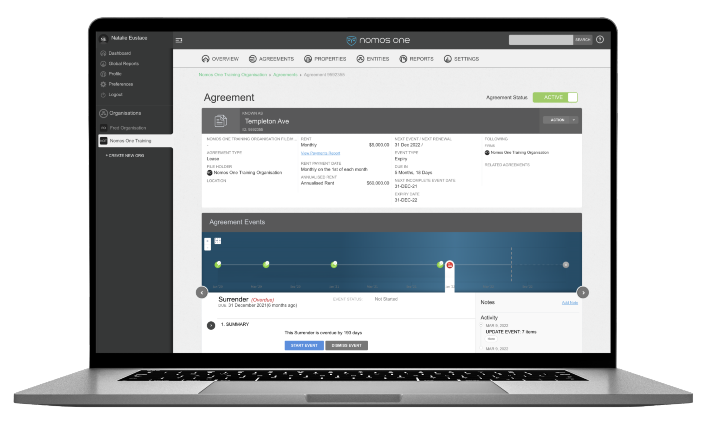As implementation of SaaS (Software as a Service) solutions becomes increasingly common among businesses, understanding its benefits and challenges becomes essential. This article explores key aspects of integrating SaaS into business workflows, including the role of superusers, managing bottlenecks, differentiating high-value from low-value tasks, and distinguishing productivity from busyness. Additionally, it highlights how a managed services offering can support these areas, particularly in managing property and asset portfolios.
The role of superusers
When new SaaS software is introduced into a business, a superuser often emerges within the team. This individual typically has a significant interest in mastering the system and enjoys the responsibility of becoming an in-house expert. They are usually the most impacted by the software in their role, and they invest time in understanding its intricacies.
Superusers bring significant advantages to an organisation. They possess expert knowledge of the system, enabling them to utilise it fully and enhance workflow efficiency. They can provide in-house training and support, reducing the need for external resources and associated costs. Their expertise also allows for quick problem-solving, minimising system downtime and maintaining smooth operations. Additionally, superusers can offer valuable feedback to the SaaS provider, contributing to future improvements and ensuring the tool's effective use within the company.
However, relying heavily on a superuser can pose risks. Over-dependence on one individual can lead to knowledge silos, where critical information is not shared across the team. This situation can also result in resistance to change, as the superuser may favour their preferences over what is best for the business. Furthermore, the concentrated responsibility can lead to burnout, affecting both the superuser's well-being and overall business continuity.

Managing bottlenecks
Bottlenecks in business occur when a specific point in a process slows down the overall workflow, limiting performance and efficiency. Identifying and addressing these bottlenecks is crucial for maintaining a streamlined operation.
Recognising bottlenecks presents opportunities for innovation and improved resource allocation. By addressing these issues, teams can better utilise manpower, software, and materials, resulting in higher-quality work. Efficient processes enable businesses to respond more quickly to market changes, maintaining competitiveness and enhancing customer satisfaction.
Conversely, failing to identify and rectify bottlenecks can lead to decreased productivity and increased hidden costs, such as excessive time spent on low-value administrative tasks. This inefficiency can cause employee frustration and higher staff turnover. Additionally, it may result in diminished customer satisfaction and missed opportunities, ultimately impacting the business's reputation and profitability.
High-value vs. low-value tasks
Differentiating between high-value and low-value tasks is crucial for effective resource management. High-value tasks directly contribute to a business's core objectives and often involve strategic decision-making, planning, and innovation. In contrast, low-value tasks, while necessary, do not directly impact strategic goals and are often repetitive and administrative.
Focusing on high-value tasks can enhance employee satisfaction and reduce turnover, as employees feel more engaged and impactful. These tasks foster creativity and innovation, helping businesses maintain a competitive edge and improve their products and services. Prioritising high-value activities also contributes to long-term business success and sustainability.
However, when employees spend excessive time on low-value tasks, they may miss opportunities to contribute to more meaningful, growth-oriented projects. This misallocation of effort can lead to employee dissatisfaction and increased churn, hindering the company's ability to build momentum and achieve its strategic objectives.

Understanding productivity and busyness
It is essential to distinguish between productivity and busyness. Productivity involves effectively and efficiently completing tasks that achieve desired outcomes, while busyness often entails engaging in numerous activities without a clear focus on results.
Productivity is goal-oriented and emphasises optimal use of time, resources, and effort. It enables employees to prioritise tasks based on their importance and impact on business goals, leading to long-term value creation. A productive work environment fosters improved processes, enhances customer experience, and boosts revenue, all while maintaining high employee morale and motivation.
In contrast, a workplace focused on busyness may lack clear goals and direction. This environment can lead to duplicated efforts, siloed information, and a lack of collaboration. When activity levels are prioritised over actual outcomes, employees may engage in unnecessary tasks, leading to inefficiencies and reduced overall effectiveness.
Introducing Nomos One's managed services
Nomos One's Managed Services offering provides a comprehensive solution to the challenges highlighted above. By allocating a dedicated in-house lease specialist, our team can help alleviate the risks associated with reliance on superusers, such as knowledge silos and potential burnout. Our experts manage critical property and asset portfolio tasks, ensuring operational continuity even in the absence of key personnel. Additionally, our service helps identify and manage bottlenecks, allowing businesses to optimise workflows and allocate resources more efficiently. This proactive approach reduces inefficiencies and hidden costs while enhancing responsiveness to market changes. Nomos One can also help by taking over low-value, administrative tasks, enabling your team to concentrate on high-value activities that directly contribute to business growth, innovation, and long-term success. By distinguishing between productivity and busyness, we help shift your team's focus towards achieving meaningful outcomes, improving overall efficiency and enhancing employee satisfaction and engagement. In summary, Nomos One's Managed Services provide a win-win solution that can help ensure that your business remains competitive, agile, and well-positioned for future growth.

Learn more about the benefits of the Nomos One Managed Services offer here.

























